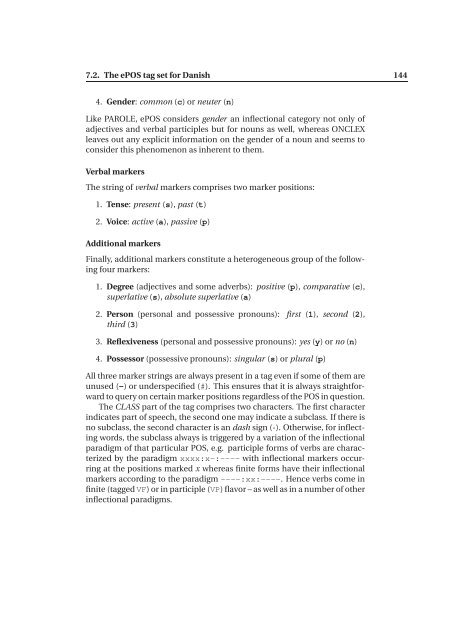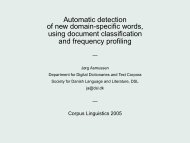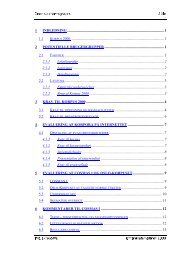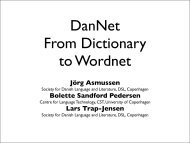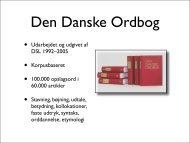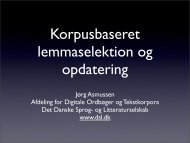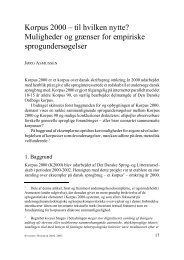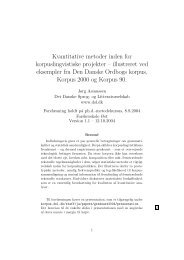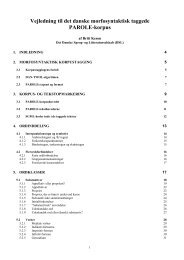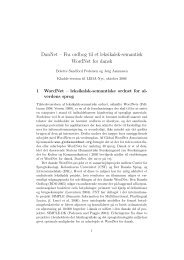The Corpus Thread - Det Danske Sprog- og Litteraturselskab
The Corpus Thread - Det Danske Sprog- og Litteraturselskab
The Corpus Thread - Det Danske Sprog- og Litteraturselskab
Create successful ePaper yourself
Turn your PDF publications into a flip-book with our unique Google optimized e-Paper software.
7.2. <strong>The</strong> ePOS tag set for Danish 144<br />
4. Gender: common (c) or neuter (n)<br />
Like PAROLE, ePOS considers gender an inflectional category not only of<br />
adjectives and verbal participles but for nouns as well, whereas ONCLEX<br />
leaves out any explicit information on the gender of a noun and seems to<br />
consider this phenomenon as inherent to them.<br />
Verbal markers<br />
<strong>The</strong> string of verbal markers comprises two marker positions:<br />
1. Tense: present (s), past (t)<br />
2. Voice: active (a), passive (p)<br />
Additional markers<br />
Finally, additional markers constitute a heter<strong>og</strong>eneous group of the following<br />
four markers:<br />
1. Degree (adjectives and some adverbs): positive (p), comparative (c),<br />
superlative (s), absolute superlative (a)<br />
2. Person (personal and possessive pronouns): first (1), second (2),<br />
third (3)<br />
3. Reflexiveness (personal and possessive pronouns): yes (y) or no (n)<br />
4. Possessor (possessive pronouns): singular (s) or plural (p)<br />
All three marker strings are always present in a tag even if some of them are<br />
unused (-) or underspecified (#). This ensures that it is always straightforward<br />
to query on certain marker positions regardless of the POS in question.<br />
<strong>The</strong> CLASS part of the tag comprises two characters. <strong>The</strong> first character<br />
indicates part of speech, the second one may indicate a subclass. If there is<br />
no subclass, the second character is an dash sign (-). Otherwise, for inflecting<br />
words, the subclass always is triggered by a variation of the inflectional<br />
paradigm of that particular POS, e.g. participle forms of verbs are characterized<br />
by the paradigm xxxx:x-:---- with inflectional markers occurring<br />
at the positions marked x whereas finite forms have their inflectional<br />
markers according to the paradigm----:xx:----. Hence verbs come in<br />
finite (taggedVF) or in participle (VP) flavor – as well as in a number of other<br />
inflectional paradigms.


